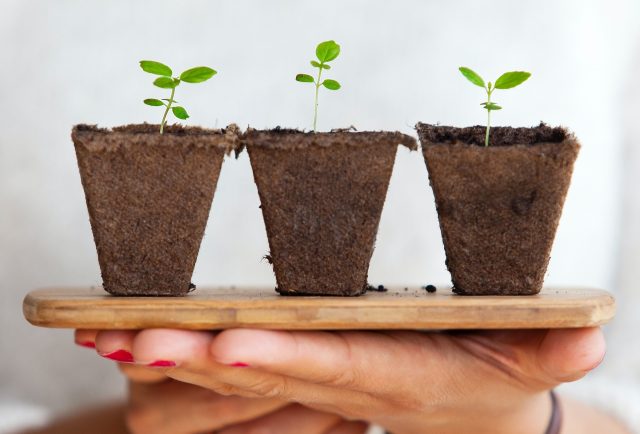
All plants need certain nutrients to grow and thrive, and marijuana is no exception. These nutrients are present in the environment, but supplementing them with fertilizer is a great way to produce a better end product as long as growers don’t overdo it. Here, growers can find some insight into the fundamentals of plant fertilization during each stage of the cannabis plant’s growth.
Macro- and Micronutrients
From the very first steps towards fertilizing weed seeds through the pre-harvest flush, growers need to make sure their plants have everything required to thrive. Depending on who a person asks, there are six to nine essential macronutrients that fuel all plant growth. While plants get carbon, oxygen, and hydrogen from air and water, they derive the other three from the soil. If the soil doesn’t contain proper levels of nitrogen, phosphorus, and potassium, it can cause nutrient deficiencies. Some experts also consider calcium, magnesium, and sulfur to be secondary macronutrients.
Micronutrients are a little different. This term refers to nutrients that plants need, but only in small amounts. The most important of them include:
- Manganese
- Molybdenum
- Boron
- Chlorine
- Copper
- Iron
- Zinc
Each of these and several other micronutrients play a different role in supporting plant health.
Seedling Fertilization Requirements
When growing plants from seed, there’s no need to fertilize them in the earliest stage because they get all of the nutrients they need from the seed itself. Growers who want to get an early start when it comes to plant feeding can start using a balanced, 1:1:1 formula once the roots have developed.
Fueling Vegetative Growth
It can take two weeks or two months for plants to enter the vegetative stage depending on the strain and environmental conditions. Once they get there, growers should increase fertilization rates. The plants’ requirements will change slightly throughout this growth stage, so most growers change their NPK ratios as the plants grow. Here’s a good schedule to start with:
- 2:1:2 – 4:2:3 for early veg
- 10:5:7 for mid-veg
- 7:7:7 for late veg
Supporting Plants in Early Bloom
When plants enter the flowering stage, their nutrient requirements shift. They start to need less nitrogen, which fuels vegetative growth, and more phosphorus and potassium. At this point, most growers switch to a 5:7:10 mix. It’s also important to find a fertilizer that offers extra calcium and magnesium at this point to support heavy bud production.
Fertilization Requirements for Mid-Bloom
Once plants have developed a calyx or sepals, it’s time to up the phosphorus and potassium even more. Mid-bloom fertilizers typically have NPK ratios of around 6:10:15 and often feature micronutrients like potassium silicate that will help to strengthen the plants later in the flowering cycle. Some growers start reducing fertilizer concentrations at mid-late bloom and apply a 4:7:10 mix instead.
The Late-Bloom Flush
Most growers stop fertilizing their plants entirely at around week nine of the flowering stage, although some continue to use supplements like calcium nitrate and kelp extracts. At this point, it’s appropriate for anyone using chemical fertilizers to flush the crop with clean, pH-balanced water. Reduce watering and withhold fertilizer entirely until the plants are ready for harvest.
Get Ready to Pull Down a Heavy Crop
If growers follow the guidelines described above using high-quality fertilizers, they can expect to see significant increases in crop yields. Other aspects of plant health such as seed quality, the amount of light, soil drainage, and other factors also play vital roles, but the right nutrients applied at the right time can make a big difference.





